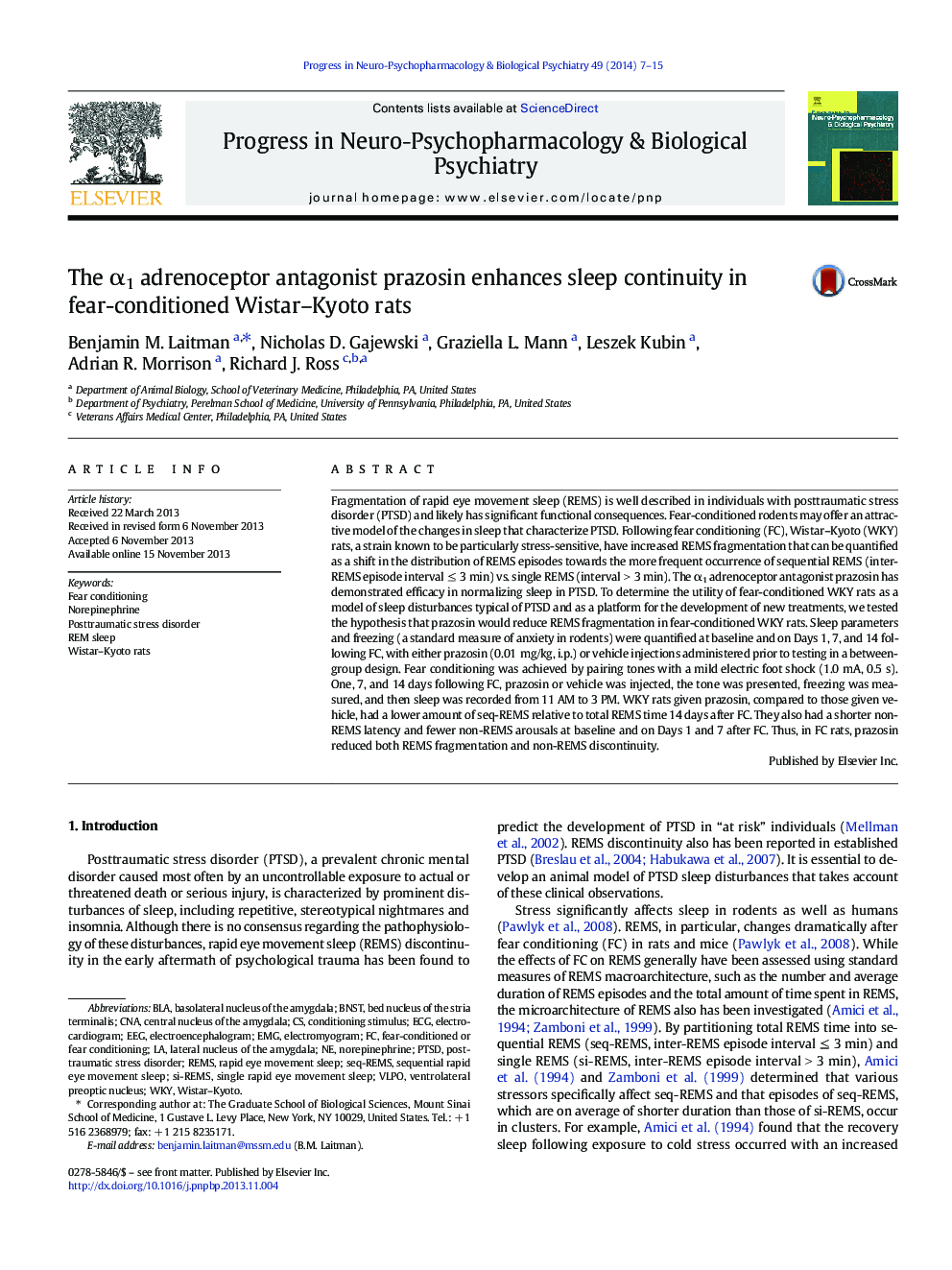| Article ID | Journal | Published Year | Pages | File Type |
|---|---|---|---|---|
| 2564866 | Progress in Neuro-Psychopharmacology and Biological Psychiatry | 2014 | 9 Pages |
•REMS discontinuity characterizes sleep in individuals with PTSD.•WKY rats show REMS fragmentation after FC.•Prazosin improves sleep in PTSD, possibly by promoting sleep continuity.•Prazosin reduced REMS, as well as non-REMS, disruption in fear-conditioned WKY rats.•Fear-conditioned WKY rats may provide an animal model of sleep in PTSD.
Fragmentation of rapid eye movement sleep (REMS) is well described in individuals with posttraumatic stress disorder (PTSD) and likely has significant functional consequences. Fear-conditioned rodents may offer an attractive model of the changes in sleep that characterize PTSD. Following fear conditioning (FC), Wistar–Kyoto (WKY) rats, a strain known to be particularly stress-sensitive, have increased REMS fragmentation that can be quantified as a shift in the distribution of REMS episodes towards the more frequent occurrence of sequential REMS (inter-REMS episode interval ≤ 3 min) vs. single REMS (interval > 3 min). The α1 adrenoceptor antagonist prazosin has demonstrated efficacy in normalizing sleep in PTSD. To determine the utility of fear-conditioned WKY rats as a model of sleep disturbances typical of PTSD and as a platform for the development of new treatments, we tested the hypothesis that prazosin would reduce REMS fragmentation in fear-conditioned WKY rats. Sleep parameters and freezing (a standard measure of anxiety in rodents) were quantified at baseline and on Days 1, 7, and 14 following FC, with either prazosin (0.01 mg/kg, i.p.) or vehicle injections administered prior to testing in a between-group design. Fear conditioning was achieved by pairing tones with a mild electric foot shock (1.0 mA, 0.5 s). One, 7, and 14 days following FC, prazosin or vehicle was injected, the tone was presented, freezing was measured, and then sleep was recorded from 11 AM to 3 PM. WKY rats given prazosin, compared to those given vehicle, had a lower amount of seq-REMS relative to total REMS time 14 days after FC. They also had a shorter non-REMS latency and fewer non-REMS arousals at baseline and on Days 1 and 7 after FC. Thus, in FC rats, prazosin reduced both REMS fragmentation and non-REMS discontinuity.
